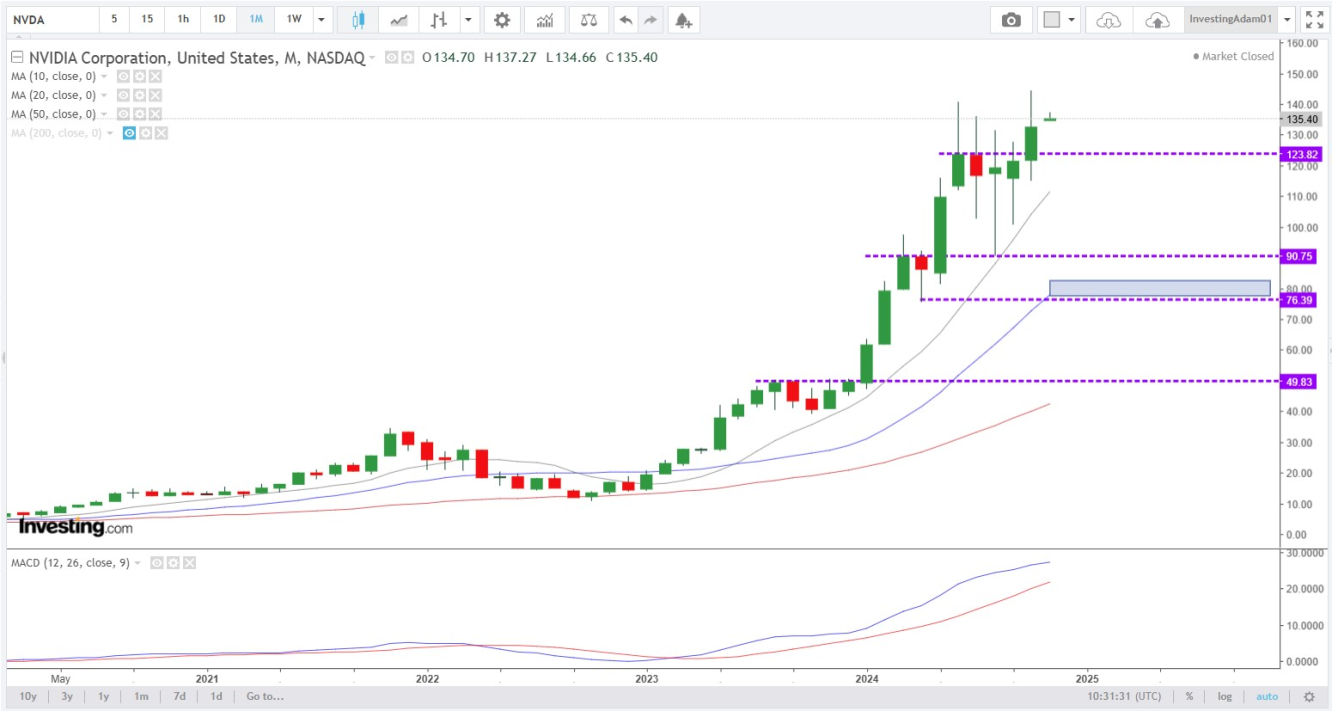In a seismic shift reflecting the artificial intelligence revolution, Nvidia (NASDAQ:NVDA) - this year's poster child for the AI boom - will replace semiconductor pioneer Intel (NASDAQ:INTC) in the prestigious Dow Jones Industrial Average on November 8. The changing of the guard couldn't be more symbolic: while Nvidia's shares have skyrocketed over 180% this year on explosive AI chip demand, Intel's stock has plunged 50%, highlighting the dramatic transformation in technology leadership.
The move represents more than just a routine index adjustment. As the first-ever semiconductor company to join the Dow in 1999, Intel's departure marks the end of an era in traditional computing. Its replacement by Nvidia - a company that transformed itself from a gaming hardware maker into an AI powerhouse - signals Wall Street's emphatic bet on artificial intelligence as the next major driver of economic growth.
Understanding the Dow's Structure
Unlike its broader cousin, the S&P 500, which weighs companies by market capitalization, the Dow's unique price-weighted structure means that higher-priced stocks have more influence on its movements. With Nvidia's stock trading at record highs, its inclusion will give it significant sway in the 30-stock index that has served as Wall Street's benchmark since 1896.
Tech companies Apple (NASDAQ:AAPL), Microsoft (NASDAQ:MSFT), IBM (NYSE:IBM), Salesforce, and Cisco Systems (NASDAQ:CSCO) are currently in the index, while tech giants Google (NASDAQ:GOOGL), Amazon (NASDAQ:AMZN), and Meta remain notably absent. This selective inclusion reflects the Dow's commitment to maintaining a balanced representation of the broader U.S. economy rather than merely tracking the largest companies.
Intel's Exit: End of an Era
Intel's removal from the Dow reflects its struggling position in today's rapidly evolving tech landscape. Once the undisputed leader in semiconductor manufacturing, the company has faced mounting challenges in recent years. Falling behind in manufacturing advancements, particularly compared to rivals like TSMC and AMD (NASDAQ:AMD), Intel has struggled to maintain its competitive edge in the industry it once dominated.
The company's difficulties in adapting to the AI boom have been particularly costly. While competitors raced to develop specialized chips for artificial intelligence applications, Intel's traditional focus on CPUs left it playing catch-up in this crucial growth market. Despite its rich history and ongoing turnaround efforts, the company's declining market position made its removal from the Dow increasingly inevitable.
Nvidia: The New Face of Tech Leadership
Nvidia's ascension to the Dow represents more than just its individual success - it symbolizes the broader shift toward AI-centric computing. The company's GPUs, originally designed for gaming, have become the backbone of AI and machine learning applications, powering everything from chatbots to autonomous vehicles.
The company's remarkable growth trajectory speaks for itself. Nvidia has emerged as a market leader in high-performance computing, with its chips becoming essential components in data centers worldwide. Its focus on AI-specific hardware has proven prescient, as tech giants scramble to secure its powerful processors for their AI initiatives.
Market Impact and Investment Implications
The index change has immediate implications for investors. Approximately $15 billion in index-linked investments directly track the Dow, meaning fund managers will need to adjust their portfolios accordingly. This rebalancing could create additional buying pressure for Nvidia shares while potentially adding to selling pressure on Intel.
For retail investors, the shift underscores a broader trend: the growing divide between legacy tech companies and those at the forefront of AI innovation. While Intel focuses on regaining its manufacturing edge through a multi-year turnaround plan, Nvidia's chips have become the de facto standard for training AI models, commanding premium prices and overwhelming demand.
By the Numbers
- Nvidia Year-to-Date Stock Performance: +180%
- Intel Year-to-Date Stock Performance: -50%
- Date of Change: November 8, 2024
- Number of Years Intel Was in Dow: 25 (1999-2024)
The Dow Difference
- Only 30 companies
- Price-weighted index
- Started in 1896
- Current tech members: Apple, Microsoft, IBM, Salesforce, Cisco Systems
- Notable tech exclusions: Google, Amazon, Meta
Looking at the monthly chart for NVDA below, there are a couple of worthwhile technical observations:
- Price show signs of exhaustion over the last 5 months.
- Price has also had a chance to recoup some energy through consolidation and is not as over-extended as it was.
- The next correction, which could be many months away, will likely be down towards the $80 blue-box zone.

Looking Ahead
The replacement of Intel with Nvidia in the Dow Jones marks more than just an index reshuffling - it represents a fundamental shift in how Wall Street values technology companies. As artificial intelligence continues to reshape industries from healthcare to autonomous vehicles, this change suggests that the next decade of market leaders may look very different from the last. For investors, the message is clear: the future belongs to those who can successfully harness the AI revolution.
For Nvidia, joining the Dow represents both a milestone achievement and a new challenge. As one of the most influential companies in the index, it will face increased scrutiny and expectations. However, given its central role in the AI transformation sweeping through global industries, Nvidia appears well-positioned to carry the torch that Intel held for the past quarter-century.
